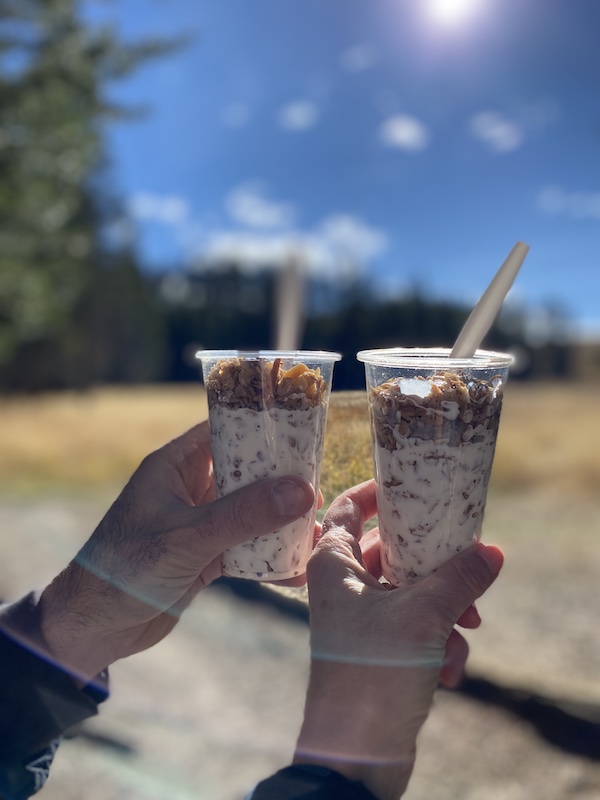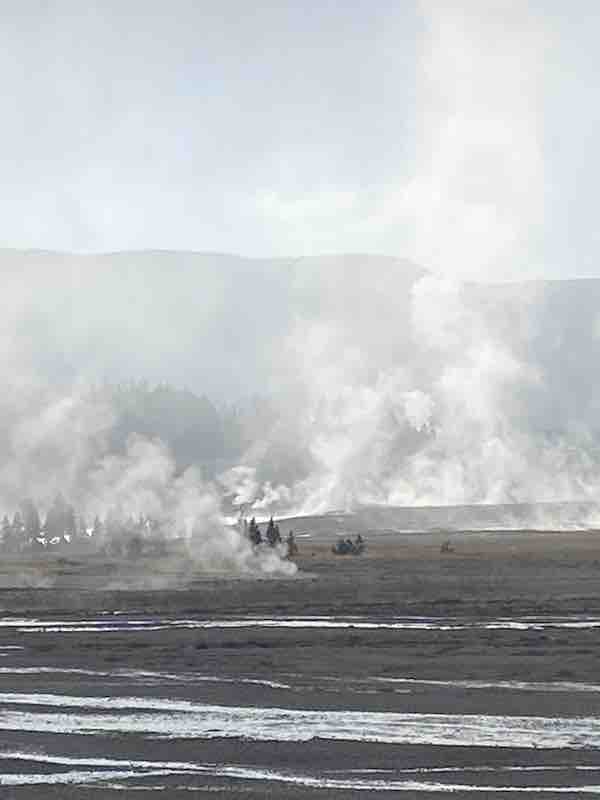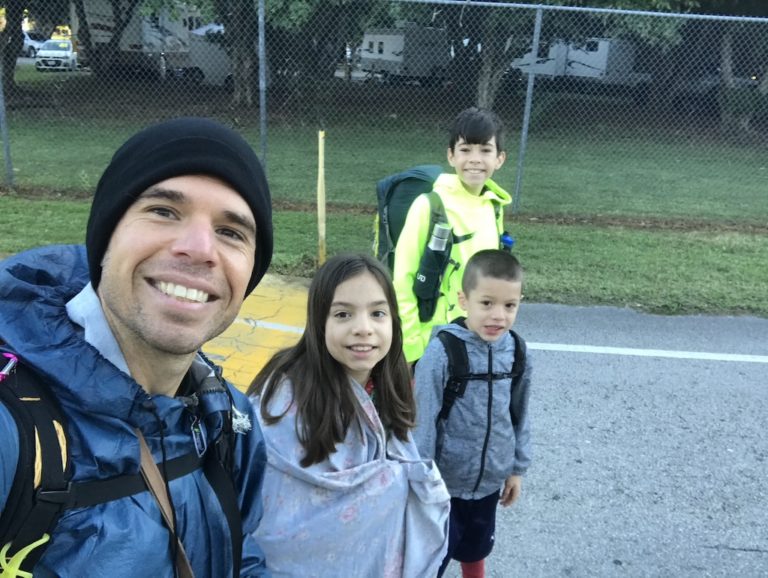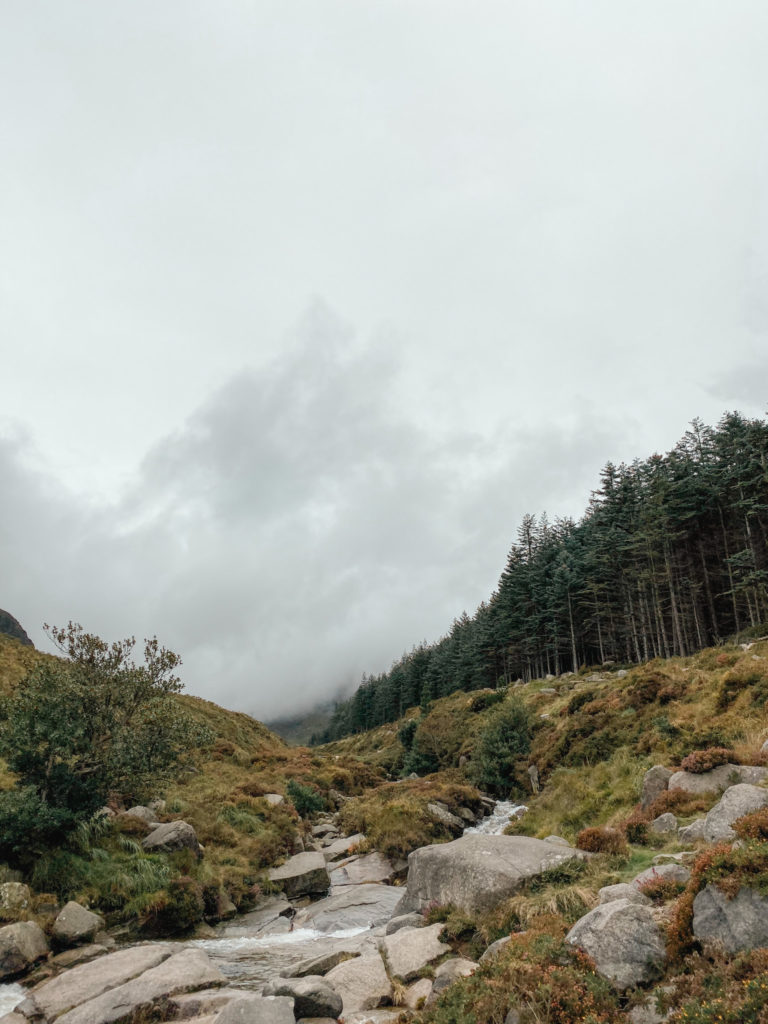Refill the Reservoir: the 3 Rs
Wriggling deeper into my sleeping bag, I looked out the side window of our Sequoia. Backlit by the full moon, silhouettes of surrounding lodgepole pines stood tall against the bright sky. It was impossible to judge the time. Exposing as little skin as possible to the low-twenties air, I reached for my book and my headlamp. Before long, dawn nudged darkness from the sky and Jaime began to stir. It was time for coffee.
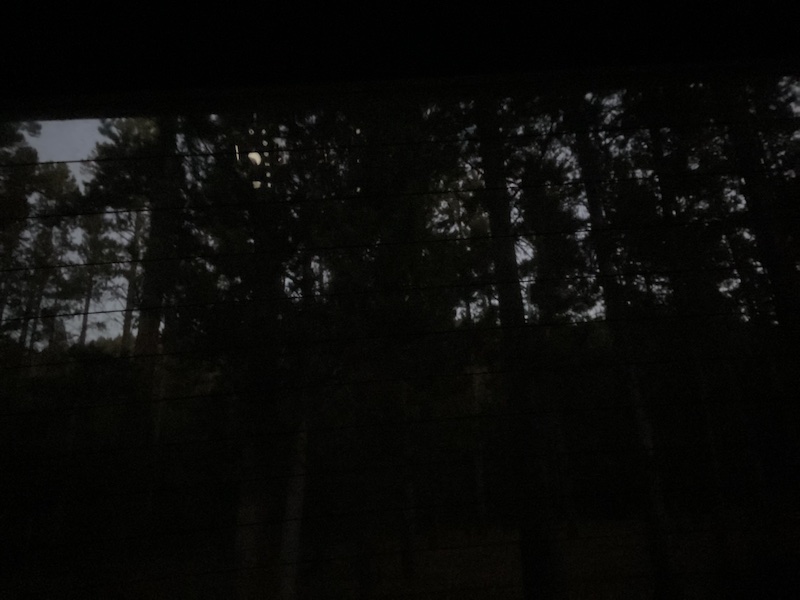
The 3 Rs
Two days before, less than five minutes into our cross-country drive to Yellowstone, I’d asked, “What three things are you most looking forward to?” Jaime’s answer was quick. “Mountain air. Morning coffee by the river. A slower pace.”
His answer surprised me. I’d expected a list of trails he’d found while poring over his maps or a goal for how many miles he wanted to log on foot. But no. He was after simple things–air, morning coffee, and lack of hustle.
When he turned the question to me, I was surprised again. “Mountain air. Sleeping outside without sleeping outside. Walking to the Madison in the mornings.”
Like the reservoirs out west, both of us were depleted—in need of refilling by way of the 3 Rs: restoration, repair, and river therapy.
Restoration
Reservoirs are natural or artificial lakes that supply water. Those we pass on our drive to Yellowstone have been dispensing more than they’ve been receiving for years. They’re low. It happens to us. Outflow surpasses inflow and our reservoir gets depleted. Added to that, these past few years have been a season—a soul-draining, strength-sapping season. Restoring the human reservoir is brought about by a variety of means. Yellowstone gave us access to a many—silence, stillness, beauty, fresh air, and freedom (from the overreach of our phones and the over-stimulation of notifications and the news cycle among them)–among them.
Repair: 3 Components
Even though mileage goals didn’t make Jaime’s list, we logged sixty. We could have hiked more, but some days we stopped so often to take pictures a sloth could have passed us. We were okay with that. Distance wasn’t the point. Walking together outside was. (This trail was a favorite.)
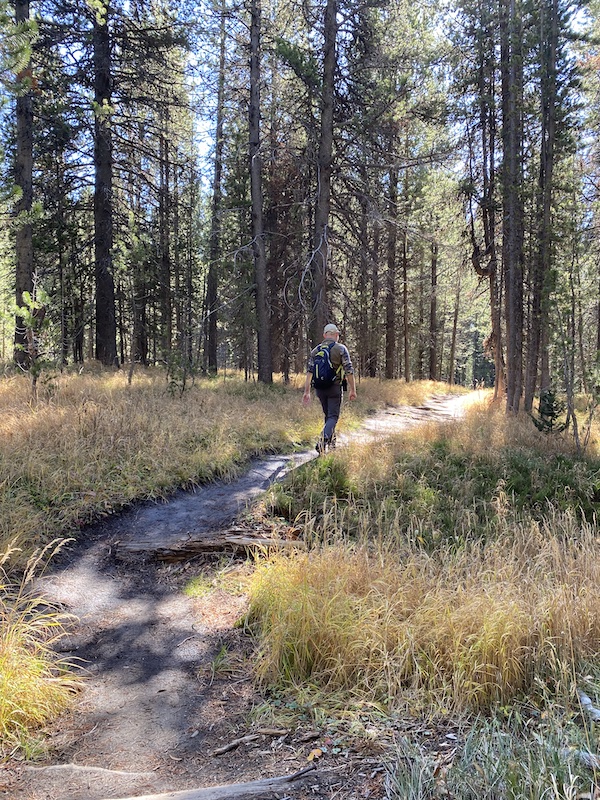
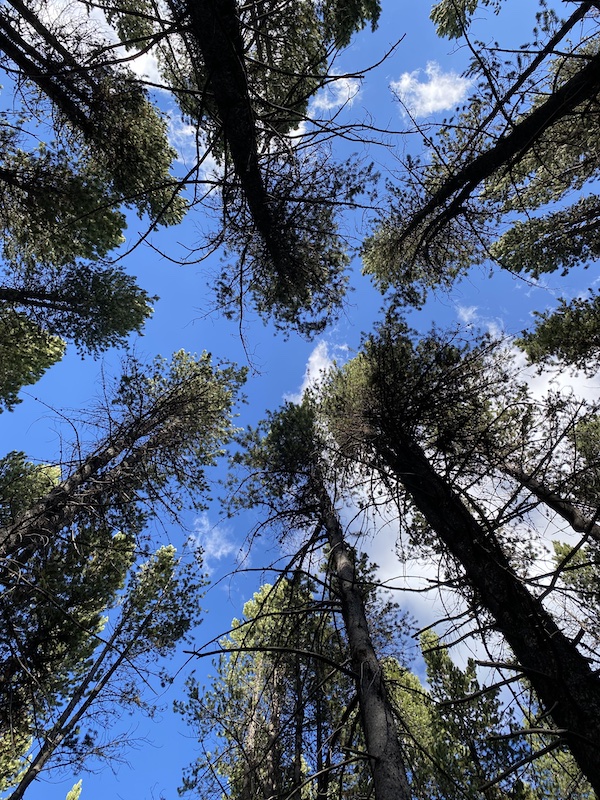
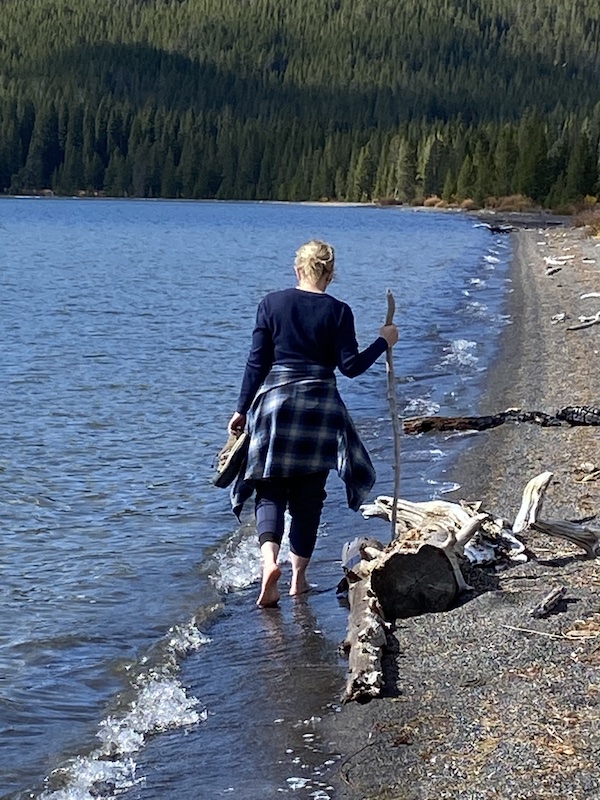
- Walking: According to Archibald Hart, humans were made to move at the pace a camel can walk. Modern life doesn’t leave space for that. It’s up to us to create it. Hiking is one way we do that. It fosters a pace that allows, in the words of Eugene Peterson, “our souls to catch up with our bodies.” Jaime and I walked and walked and walked—not only absorbing the fresh air and beauty surrounding us but engaging in what some people call “poor man’s EMDR” along the way. EMDR (Eye Movement Desensitization and Reprocessing) is a specific type of therapy meant to help people heal from disturbing life experiences or trauma. I’ve heard John Eldredge connect our modern age with trauma and I don’t think he’s wrong. By spending several days and sixty miles walking—moving slower than a camel, at a pace slow enough for our souls to keep up with our bodies, repair to the reservoir came along as a nice fringe benefit.
- Together: At home, the number of hours we spend together come after—after work, after meetings, after we’ve taken care of business and other people. On the trail or on the road—together—we’re engaged in the same conversation, seeing the same scenery, enjoying the same silence. It strengthens us as individuals and as a unit.
- Outside: Spending as many of our allotted hours as close as possible to creation heals broken places of heart, soul, mind, and body. While I love (and once worked at) Yellowstone’s Old Faithful Inn, we’ve started camping instead of staying there. I’ve named our specific style of camping in our SUV sleeping outside without sleeping outside. Restoration requires sleep. Cold I can sleep through. Soaking rain and roving bears, not so much.
River Therapy
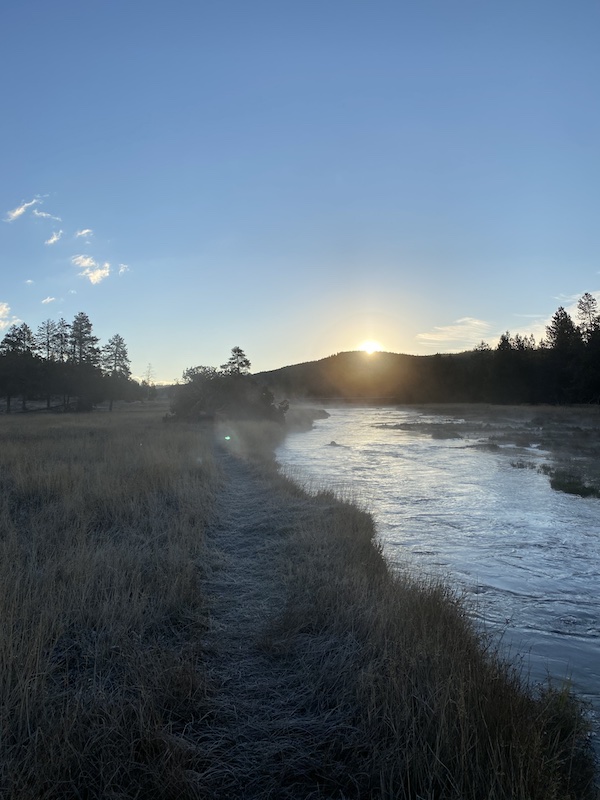


Jaime is drawn to water. He’s happy on it, in it, and near it. He likes to study it and fish it. I prefer to look and listen. Water is good for his soul and for mine. We made river therapy a priority.
Every morning, Jaime made coffee and poured it into two insulated mugs and we walked to the Madison River. In the silence of the new day, we witnessed the sun’s first peek over the surrounding mountains. Standing in the frosty meadow foliage, we watched fly fishermen, geese, ducks, and even bison in the steamy mist that hovered over the water.
Because we prefer picnicking to choosing our hikes based on proximity to restaurants, we ate every not-on-the-trail meal next to a river. Except for breakfast. Breakfast was always our house granola—often eaten on the drive from the Madison to our day’s first destination and sometimes even out on the trail. (Access my house granola recipe here.)
Some evenings, we arranged our day so we could watch the sun set over the river. Because you don’t arrive at the last minute for a sunset, we had plenty of time to sit near the river and avail ourselves of its healing power.

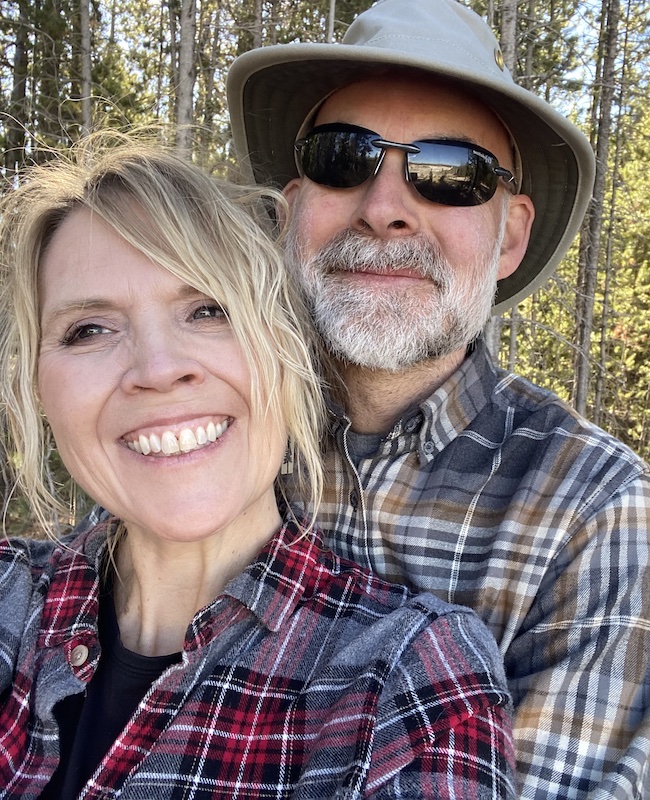

Pause & Reflect: How’s Your Reservoir?
Back at home, we’re trying to steward the work that God did to restore our low reservoirs by taking small, restorative actions. There’s no river walk, but there is morning coffee. There’s no forced freedom from our phones but there is Apple Focus. There aren’t days open for hiking but there are evening walks, even in winter. And there’s the gift of Sabbath, an opportunity for us to arrange for rest.
How’s your reservoir? Take some time to evaluate its condition. What small, restorative actions can you take?
happy trails ~ Natalie 🥾
